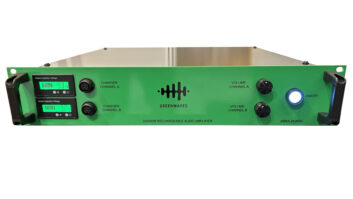Song Facts

Single: “Know Your Enemy”
Album:21st Century Breakdown
Date Recorded: September 2008
Producers: Butch Vig, Green Day
Engineer: Chris Dugan
Mixer: Chris Lord-Alge at Mix L.A.
Mastering Engineer: Ted Jensen at Sterling Sound
Other Projects: Gish, Smashing Pumpkins; Nevermind, Nirvana; New Wave, Against Me!; All or Nothing, the Subways
Single Songwriter: Billie Joe Armstrong, Green Day
Mixing Monitors: Yamaha NS-10, Infinity Systems BU-2, M&K MPS-2510, Sony SZ-M1 Desktop MiniDisc System
Mixing Console: Solid State Logic G Series with all E modules
Vocal Signal Chain: (Billie Joe Armstrong) Telefunken|USA U 47, Chandler LDT-1, Retro Instruments 176, Apogee AD-16X; (Mike Dirnt) Telefunken|USA Ela M 251, Chandler TG Channel MKII, Retro Instruments 176, Apogee AD-16X
Recorder: Digidesign Pro Tools
Engineer’s Diary:
Green Day’s highly anticipated 21st Century Breakdown has exploded out of the gate, a critical and commercial success that builds on the themes of the band’s preceding hit album, American Idiot.
For producer Butch Vig, success is very sweet: the May 15 release was the culmination of many, many months of work. “I’m pretty stoked,” he admits. “It’s my first No. 1 debut, at least in the U.S., which is pretty cool. I think the record’s gonna have some legs. Fingers crossed, it’s going to connect with people.”
Butch Vig
Vig and the band spent over six months in preproduction before cutting the album tracks in sequential order. “By the time preproduction was done, we’d worked on the songs so much that we had a sequence and pretty good-sounding demos,” he recalls. “So when we went in to record, after getting sounds on things, it was a pretty fast process, because we knew what we were doing.”

“Know Your Enemy,” says Vig, was recorded in Studio B at Ocean Way in Hollywood. “We cut the song and let it sit for a couple of days,” he explains. “We had the basic track and were getting ready to move on and cut another basic, and were like, ‘Let’s review and listen to it.’ The track sounded amazing, but we felt like it was a little too fast, a little too hyper-sounding. There’s a certain ‘swing/pulse’ thing that Green Day gets when they really lock in. When we re-cut it, we got it in the first or second take. Just a little slower, and it just had more of a pulse to it.
“We made a very deliberate decision to not make the rough mixes sound too polished,” Vig continues. “We’d do a little bit of editing if we needed to tighten things up, but most of the record is very analog in terms of how we recorded it. There’s not a lot of digital manipulation. We made a conscious decision to try and record it, as much as possible, ‘old-school,’ with a really good-sounding analog chain.
“The song is so simple,” Vig allows. “It reminded me of ‘Street Fighting Man’ when I first heard it: It’s basically two chords, back and forth. Rather than add a lot of fancy parts or other riffs or counterpoint things going on, that’s the main riff; we just made sure that riff sounded killer.”
Christopher Walsh is the recording editor for Pro Sound News and the associate editor of Pro Audio Review.





